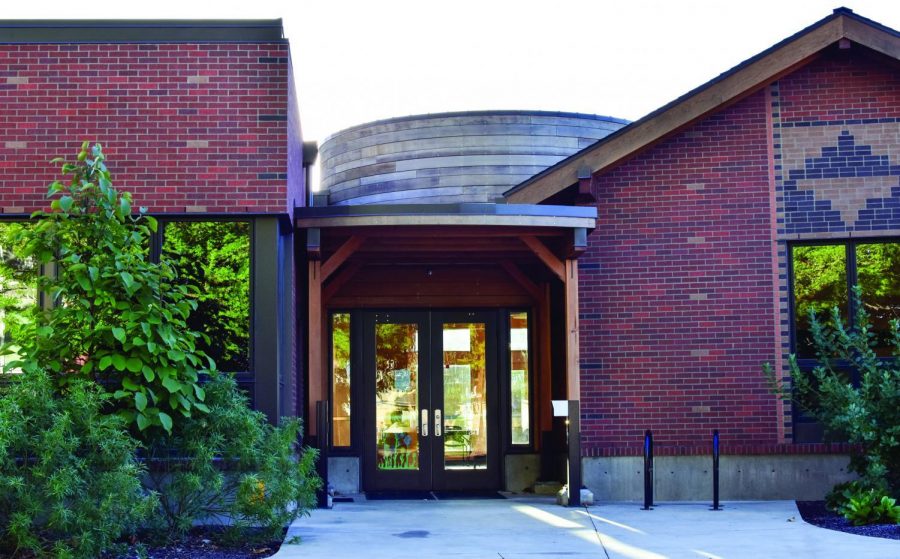Lonnie B. Harris Black Cultural Center
September 15, 2017
In 1969, an Oregon State University football player was kicked off the team for refusing to shave his afro and sideburns. This lead to an uproar among the African-American students on campus.
As a result, 47 African-American students staged a walkout to protest the incident. These actions and their repercussions sparked a conversation that lead to the formation of the Black Student Union and, later in 1975, the creation of the Lonnie B. Harris Black Cultural Center.
Now the BCC continues to provide a space for African and African-American students at OSU. Their location, on the intersection of Memorial Place and Monroe Avenue, offers tutoring, printing, movies, games and conversation, along with scheduled events designed to promote inclusivity and community.
“We’re part of Diversity and Cultural Engagement, so I guess the uniqueness is that we have seven cultural resource centers and not every campus across this country, especially around the globe, has something like that,” Terrance Harris, director of the BCC, said. “So that’s a uniqueness in itself, and a space that we can actually dedicate towards African, African-American, black, diaspora, you know, history, legacies, excellence.”
The concepts of both legacy and excellence play directly into the center’s goals for the upcoming year, according to Harris. They will focus on evaluating what those topics mean and how they apply to students. Events and programs throughout the year will explore these ideas and many others while tying it together with a sense of fellowship, Harris added.
Taking place on September 20 in the BCC is the event Black Connect. It will offer an opportunity for incoming students to interact with their peers, BCC staff and several student organizations. Groups represented include the Black Student Union, African Student Association, Black Graduate Student Association, National Society of Black Engineers, National Association for the Advancement of Colored People and National Panhellenic Council houses represented on campus.
“The best thing is to just come by and see the events,” Harris said. “You don’t have to be black to come to everything, everyone is welcome.”
According to Trenton Joiner, a leadership liaison with the BCC, the best way to get involved is just going in, talking to the people there and making yourself known.
“My freshman year, I started just coming to the BCC,” Joiner said. “Not being from Oregon, there was the situation that there weren’t as many black people around. This became a home away from home.”
According to Harris, students are encouraged to come in, chat with the staff and enjoy this sense of community anytime. The center is open Monday through Thursday 10 a.m. to 7 p.m. and Fridays 10 a.m. to 5 p.m. The center also has an email list which students can join to stay informed, Harris added.
Justeen Quartey, the president of the Black Student Union, says the staff at the center wants students to feel welcome and wanted as part of the community. All students, no matter how they identify, are encouraged to check the BCC out.
“Stop by the BCC at anytime with an open mind and we would be happy to get you involved anyway possible,” Quartey said via email. “We have a young and excited team on staff this year who is striving to help support the community and retain students.”
Regardless of identity, the BCC is somewhere for everyone to engage in dialogue and learn, according to Harris. Just because you don’t identify with the culture doesn’t mean you can’t be aware of it. Getting involved with programs like the cultural centers facilitates growth and understanding of a community which may be different from your own, Harris added.
According to Joiner, the biggest step in entering one of the cultural centers is asking questions.
“I think it’s important for people to know that anyone’s welcome in this space, anyone can come in,” Joiner said. “Whether you’re black or not, whether you identify that way or you don’t, it’s a very welcoming space. That’s the same at any cultural center, they’re places where you can come and feel welcome and that’s the purpose.”

















































































![Newspaper clipping from February 25, 1970 in the Daily Barometer showing an article written by Bob Allen, past Barometer Editor. This article was written to spotlight both the student body’s lack of participation with student government at the time in conjunction with their class representatives response. [It’s important to note ASOSU was not structured identically to today’s standards, likely having a president on behalf of each class work together as one entity as opposed to one president representing all classes.]](https://dailybaro.orangemedianetwork.com/wp-content/uploads/2025/03/Screenshot-2025-03-12-1.00.42-PM-e1741811160853.png)























